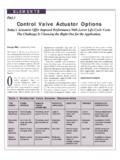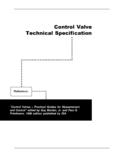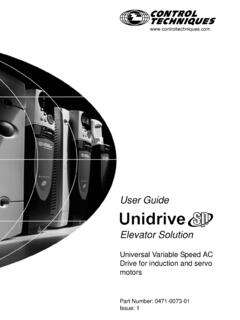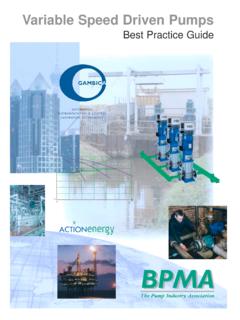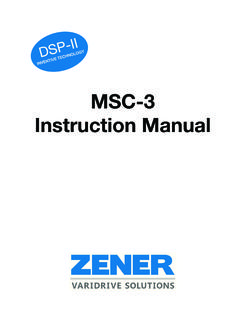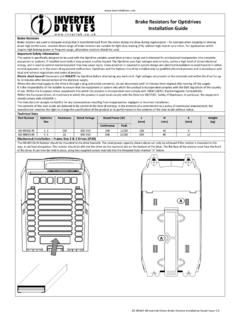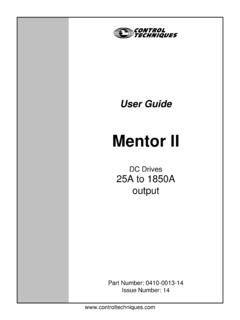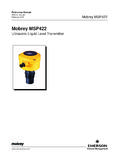Transcription of Best EMC Installation Practice for Variable Speed Drives ...
1 Session Fourteen: Best EMC Installation Practice for VSD Earthing, Lightning & Surge Protection IDC Technologies 1 Session Fourteen: Best EMC Installation Practice for Variable Speed Drives Understanding the Main Differences and Goals Between Earthing and Bonding Eduardo Gie Technical Manager, Danfoss Pacific Power Electronics Abstract The application of Variable Speed Drives (VSDs) or/ Variable frequency Drives (VFDs) are well-known for their benefits. They are energy efficient and flexible in the controlling of processes and machinery using standard AC or PM motors.
2 Although many VSD s can provide efficient control, depending on the design and Installation of the VSD, they may result in increased problems elsewhere in the electrical system. When electrical noise problems arise, it can result in unreliable operation of other equipment, increased liability, increased project timescales and result in non-compliance with regulatory requirements. It can cause loss of revenue, since it can be a very time-consuming and a costly exercise to resolve them. Taking a "prevention is better than cure" approach during the front end design, selection and Installation of VSDs, can ensure that these problems are avoided.
3 This presentation highlights the recommended EMC best Practice to avoid undesired Electromagnetic interference when installing VSDs in commercial and industrial applications to: 1/ assure personnel s safety and the protection of installations against power system faults and lightning (Earthing), 2/ allow a low impedance path to divert the power faults current and high frequency currents without passing through other equipment and to ensure equipotential (Bonding), 3/ enhance the equipment s performance, 4/ maximize commissioning timescales, 5/ ensure reliable operation, 6/ to comply with EMC regulations.
4 Session Fourteen: Best EMC Installation Practice for VSD Earthing, Lightning & Surge Protection IDC Technologies 2 Introduction The application of Variable Speed Drives (VSD) today, (also known as VVVF, VFD or AFD) in all automated process plants is a standard equipment that controls the Speed of Asynchronous Motors (AC Motor) or Permanent Magnet Motors (PM Motor). Besides its ability to adjust the motor Speed infinitely to the production process requirements, it also offers numerous advantages such as: energy saving, reduction of mechanical stress on machinery, improvement of the displacement power factor (cos phi) of the motor, etc.
5 Energy can be saved by simply matching the required Speed . In a constant torque (CT) application ( conveyors) the electrical energy is ~50% of the rated power at half the motor Speed ; while in Variable torque applications ( centrifugal pumps or fans) the electrical energy is ~ of the rated power at half the motor Speed . However, depending on the design and Installation of the VSD, they may result in increased problems elsewhere in the electrical system due to their secondary effects such as harmonic distortion, motor insulation stress (dv/dt), motor acoustic noise and leakage current (RF energy).
6 All VSD manufactures have solutions to overcome these potential problems but one of the most common misunderstandings is to believe that the inclusion of the RFI filters with the VSD is sufficient to ensure that there are no EMC problems. This paper will only cover the Radio-Frequency energy radiated and conducted in a range from 150 KHz to 30Mz and discuss the reasons why it is important to follow best Practice for the Installation of VSDs, as to ensure the problems due to leakage current are avoided. The information provided in this paper does not consider the safety aspects as such, but it is important for me to mention that safety must never be compromised for the sake of EMC.
7 The nature of interference VSDs control the Speed of AC motors by varying the frequency and voltage of the electrical supply to the motor. The vast majority of VSD today uses Pulse Width Modulation known as PWM for the generation of a 3 phase voltage with corresponding frequency. In layman s terms the PWM produce a varying output frequency and voltage by switching transistors on and off at a fast rate (typically at 3,000 times per second and up to 16,000 times per seconds) and with very short rise times of each pulse (~ ). Figure 1 shows an inverter section with six transistors (IGBT type) and figure 2 shows a PWM waveform at the output of a VSD.
8 Figure 1 Inverter section with 6 IGBTs Session Fourteen: Best EMC Installation Practice for VSD Earthing, Lightning & Surge Protection IDC Technologies 3 Figure 2 PWM VSD output voltage waveforms During the early days of digital electronics (~1970), people used to observe flickering on their television or interference on the radio when switching on a light switch in the house. Just imagine how difficult it would be listen to the radio when a switch (which is in this case is represented by a transistor) turn on and off at 3000 times per second or more.
9 Such a phenomenon is a result of radio frequency interference (RFI) or electro- magnetic interference (EMI). The switching of the light switch results in interference on the mains supply which affects the operation of the television or radio. The high frequency switching of relatively high currents by a VSD s output transistors and the very short rise times of each pulse can result in high levels of RFI noise radiated and/or conducted onto the mains supply or other control cables causing unintentional and unexpectedly interference in other electrical devices, especially when the level RFI noise is too high than allowable limits.
10 Hence the control of the Electromagnetic Compatibility (EMC) has been an increasing necessity to ensure reliable operation. It minimizes liability risk, reduce project time scales and help to meet with local standards & code of Practice . Remember that prevention is better than cure. The best time to consider all aspect of EMC is during the upfront design, selection and Installation of VSDs to ensure these problems are avoided. The need to comply EMC regulations The level of allowable conducted RFI noise from the Installation of a VSD is defined in the Australia Standard AS This standard is specific to VSDs and identical to IEC 61800-3:2004.
